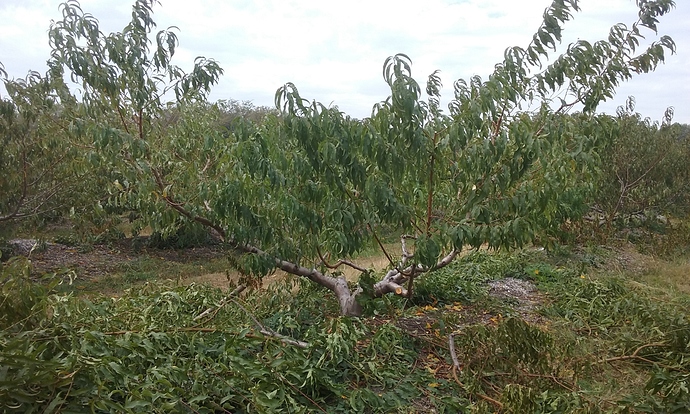This is obviously an old thread, but since I was pruning today I thought I’d show something perhaps interesting.
In post 17 above I showed a pic of a tree I had severely pruned this spring (not the second pic in post 38, but the first pic, post 17). I had quite a few trees like the one in 17, trees which hardly had any fruit, and were pruned to remove any shoots which were blank.
I’ve been doing fall pruning for a couple weeks now and noticed a lot of the trees are unrecognizable from the butchering they received this spring.
Below is a 24-007. It’s not the 28-007 shown in pic 17, but it was pruned just as hard because, like the 28-007s, it hardly had any fruit set after the frosts.
Here is a pic I took today after I’d already removed a little wood with a chainsaw the other day.
These trees really filled back in over the summer. Thought I’d show a “before and after” pic after I fall pruned this tree today. Here is the after pic:
Even after all these years, sometimes I’m surprised how fast peach trees grow. One thing I have noticed is that some older trees don’t fill in the way these younger trees do. They just won’t push adventitious buds the way younger trees will, and they don’t have quite the vigor.
Here’s a really young peach tree I took a pic of today. It’s a volunteer seedling. This is the first year - it sprouted this spring. I budded a named variety to the base of it about a month ago. This seedling grew faster than most. The shovel is about 4’ tall, so I think the tree is 6 or 7’ tall.
Here is a row of seedlings (planted the pits last summer/fall). They didn’t grow as much as the one above. This is more normal growth. Actually I’d prefer a little less growth for seedlings. When the trunks get too big, the trunk wood acts like older wood and the budding success rate goes down. I got about 1/2 of these budded about a month ago (I hope to do some grafting on the remainders this spring.)
Anyway, my point is that healthy peach trees grow like weeds (in this locale). But they don’t always thrive here. Winter lows and rain are an anathema to peach trees.



